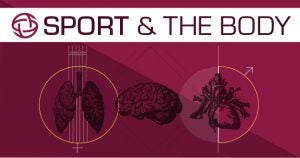Nothing sunshine-y about excess vitamin D for athletes
 The phrase “everything in moderation” has been around a long time, but who would have guessed it even applies to vitamins?
The phrase “everything in moderation” has been around a long time, but who would have guessed it even applies to vitamins?

It’s true, and vitamin D, which is essential to developing strong, healthy bones, can actually cause a decrease in bone density in people who consume more than the recommended daily value — 600 IU (international units) — of the fat-soluble “sunshine vitamin.”
In a study done by the American Medical Association, 303 people, aged 55-70, consumed 400, 4,000, and 10,000 IU of vitamin D supplements daily over a period of three years. Those who consumed 400 IU experienced a 1.4% decrease in bone mineral density (BMD) over the three years.
It is common, as we age, to lose bone density naturally. However, those who consumed 4,000 IU daily experienced, on average, a 2.6% decrease in BMD, and there was a 3.6% decrease in the group that consumed 10,000 IU daily. Thus, the study demonstrated that excess vitamin D actually has a negative impact on bone strength and density.
So what does this mean for athletes? Proper exercise and diet can help limit bone density loss.
Runners, for instance, can gain bone strength and density from the load the sport places on bones.
“Although sufficient vitamin D is important to maintain healthy bones, mechanical loading is also an important factor,” said Steven Boyd, director of the McCaig Institute for Bone and Joint Health at the University of Calgary.“The loads generated by walking and running are important because loading plays an important role in the cellular processes regulating bone maintenance.”
According to Boyd, high doses of vitamin D are associated with the suppression of parathyroid hormone (PTH) and increase in a blood marker of bone breakdown, leading to the loss of bone density. This can be linked to an increased risk for acute illness, inflammatory injury, stress fracture, muscle pain and weakness and suboptimal muscle performance, according to Gatorade’s Sports Science Institute.
PTH helps keep blood calcium levels at a normal rate, and calcium helps promote bone strength.
“PTH also stimulates normal bone maintenance — which is the removal of old bone and stimulation of new bone formation,” Boyd added. “So if there is increased bone breakdown, combined with less PTH stimulation of bone maintenance, the net effect may be modest bone loss.”
Another side effect of excessive vitamin D intake is hypercalcemia, which is excess calcium in the bloodstream. A large range of complications can stem from hypercalcemia, including irregular heartbeat, irritability and anxiety, high blood pressure, nausea, and muscle fatigue.
However, there are many different factors that affect how one absorbs vitamin D, meaning the daily recommendation may differ for individuals. Some factors include: air pollution levels, latitude, weight, age, and the health of the person’s liver and kidneys.
At higher latitudes — nearer to the poles and farther from the equator — the amount of vitamin D-producing UVB rays decreases due to the low angle of the sun. However, holes in the ozone layer from air pollution can increase the amount of UVB rays entering the troposphere, the lowest level of the atmosphere.
Some types of liver disease can limit the absorption of vitamin D, as an ailing liver cannot produce the bile necessary to breakdown the vitamin.
Among the foods rich in vitamin D are swordfish, yogurt, salmon, tuna, milk, and eggs. Just 3 ounces of swordfish or 4 ounces of salmon, for instance, provide the daily recommendation of 600 IU of vitamin D.
Chase Williams is a senior sports journalism major at Arizona State University

